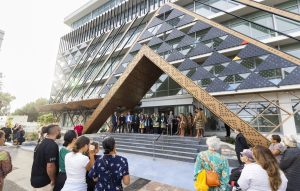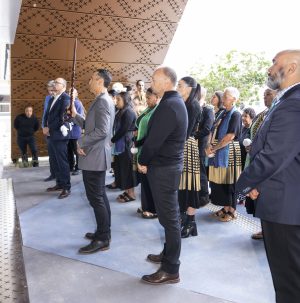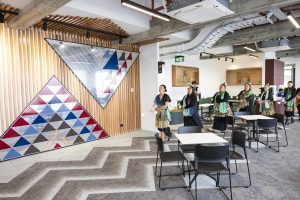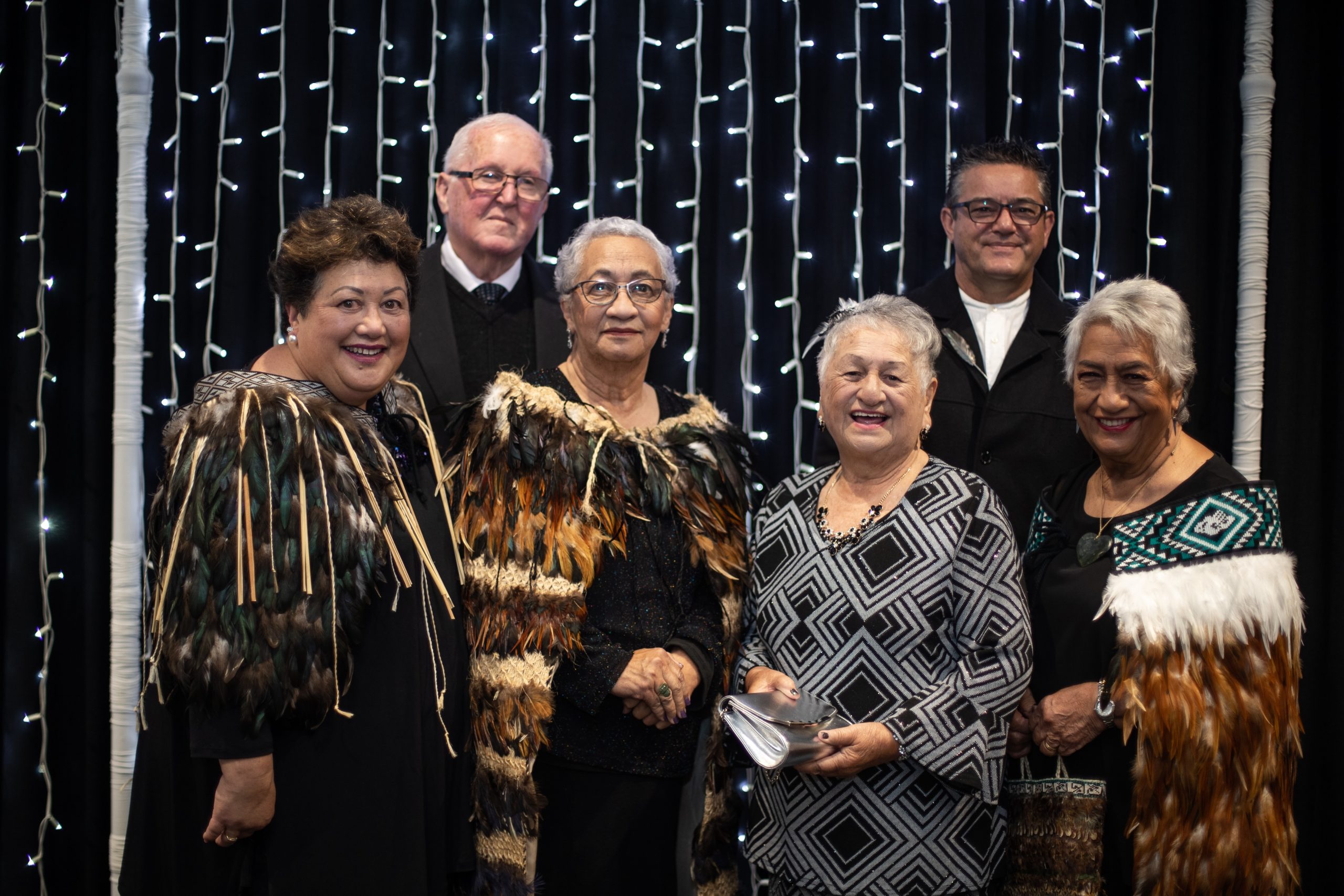
I haere mai e te iti, i tatū mai e te rahi, i rarau iho mai e te katoa. Kua tūwhera mai rā te whare o Ngāmotu hei pou wharetoka mō te iwi.
On Saturday, hundreds of Te Atiawa whānau and guests celebrated the long-awaited opening of Ngāmotu House.
Since mid-2022, Ngāmotu House has undergone extensive strengthening and a complete refurbishment. This six-storey 4,000m² commercial building now becomes a central hub for Taranaki businesses and adds to the vitality of New Plymouth’s West End precinct.
The opening began with Ngā Whakaritenga (ceremonial formalities), followed by a Whānau Open Day where families explored the Te Kotahitanga o Te Atiawa fifth floor office and learnt about the cultural narrative behind the building’s design.
Liana Poutu, Chair of Te Kotahitanga o Te Atiawa, was thrilled to see so many whānau enjoy their building and seeing the aspirations of its people come to fruition.

“This is more than a building for us, it is a celebration of our Te Atiawatanga,” says Liana.
Boon Architects worked alongside Te Atiawa and Ngāti Te Whiti to weave a Te Atiawa cultural narrative throughout the refurbishment.
“Ngāmotu House is a visual expression of our commitment to whakapapa, to each other, and to our past,” says Hemi Sundgren, Cultural Advisor for Ngāmotu House. “It brings Te Atiawa back into its landscape and reindigenising our space.”
Liana Poutu says this opening is another step in the long-term strategy for Te Kotahitanga to balance its commercial, cultural, social and environmental aspirations.
“As well as this commercial investment, we have increased our home ownership and affordable rental pathways for whānau. In the last six months alone we have supported, in most cases with Ka Uruora, 10 whānau into their own homes.”
Te Kotahitanga are grateful to Ngāti Te Whiti hapū for their ongoing support of Ngāmotu House and the other residential and commercial developments already in the pipeline, within their rohe. We would also like to thank Clelands Construction, Boon Architects, Egmont Dixon and the many contractors, local and Māori businesses who have worked tirelessly on this development.

Short cultural narrative of Ngāmotu House
The external façade honours Te Atiawa ancestor Rongoueroa, the mother of Awanuiārangi. Rongoueroa is represented as a parawai – a high status cloak made of flax fibre. This parawai wraps around the building and is a symbol of protection, integrity and collectivism. It’s design also mirrors Taranaki Maunga as a tupuna for its people. The tāniko (weaving) pattern is in honour of our Te Atiawa and Taranaki weavers who were held in high regard for their craft. The niho patterns not only represents a tooth, but the communities in and around New Plymouth.
The colours, both inside and out, include blue to signify the moana (sea) and the traditional ‘Te Atiawa blue’. The red and orange represents the kōkōwai (red ochre) found on Taranaki Maunga and symbolises the vitality of the people of Te Atiawa, and black is a symbol for papatūānuku (Earth mother). The windows on each floor are tinted in different shades to reflect the horizontal layers of the mountain – from the green of the bush on the bottom to the white of the snow and blue of the sky higher up.
The name Ngāmotu House was gifted in recognition of a number of hapū collectively known as Ngā hapū o Ngāmotu. It is also the name of the culturally significant Ngā Motu Islands, and is a name now more widely used for New Plymouth.



